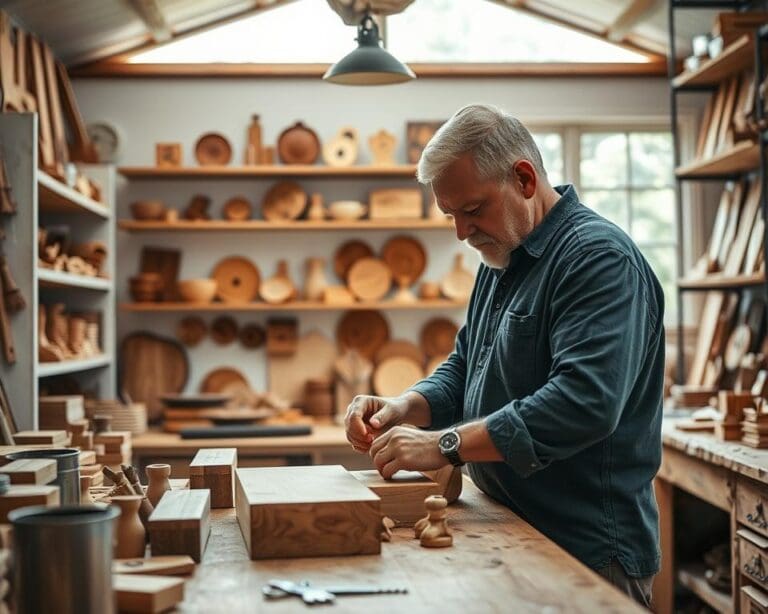Selecting the right furniture for your home can be a daunting task, especially when you’re looking for pieces that will last. Durable furniture is not just about style; it’s about investing in quality furniture that withstands the wear and tear of daily life.
When furnishing a new home or replacing old pieces, it’s essential to consider the factors that make furniture long-lasting. Understanding the importance of quality materials and how to maintain your furniture can make all the difference. For those looking for sustainable options, considering second-hand furniture can be a viable alternative, offering significant savings while reducing waste.
Key Takeaways
- Invest in quality materials for long-lasting furniture.
- Regular maintenance is crucial for durability.
- Consider second-hand furniture for a sustainable option.
- Inspect the condition of pre-owned furniture carefully.
- Quality furniture may cost more upfront but saves in the long run.
The Value of Investing in Durable Furniture
Durable furniture is more than just a purchase; it’s a long-term strategy for a sustainable and stylish living space. When you invest in high-quality, long-lasting pieces, you’re making a statement about your values and commitment to your home. This approach not only benefits the environment but also enhances your living experience.
Environmental Benefits of Long-Lasting Pieces
Choosing sustainable furniture means reducing waste and minimizing the environmental footprint associated with frequent replacements. Long-lasting furniture pieces are typically made with higher quality materials and constructed with durability in mind, reducing the need for repairs, replacements, and the waste associated with discarded furniture.
The production of new furniture requires significant resources, including wood, metal, and energy. By opting for eco-friendly furniture, you’re supporting manufacturers that prioritize environmental responsibility, from sourcing to production and beyond.
Financial Advantages of Quality Over Quantity
While the initial cost of durable furniture may be higher, it’s a cost-effective choice in the long run. Quality furniture requires less maintenance and is less likely to need replacement, saving you money over time. This approach to furnishing your home is about valuing quality over quantity.
Investing in a few high-quality, timeless pieces can be more economical than buying cheap, trendy items that quickly go out of style or fall apart. This strategy not only reduces waste but also helps you avoid the costs associated with frequent replacements.
Creating a Timeless Home with Enduring Furniture
Durable furniture contributes to a timeless aesthetic in your home. Timeless pieces are designed to be appreciated for years to come, not just for a season. They become part of your home’s character, telling a story of quality and taste.
By choosing furniture that stands the test of time, you’re creating a living space that feels both elegant and enduring. This isn’t just about the style or design; it’s about crafting a home environment that is both beautiful and functional.
Understanding Furniture Materials and Their Longevity
The materials used in furniture making play a pivotal role in determining its lifespan. Different materials have varying levels of durability, and understanding these differences is crucial for making informed decisions when selecting furniture.
When it comes to wooden furniture, the type of wood used is a significant factor in its durability. Hardwoods like oak, maple, and cherry are generally more durable than softwoods due to their denser grain structure.
Hardwoods vs. Softwoods: Durability Comparison
Hardwoods are known for their strength and resistance to wear and tear, making them ideal for furniture that will be used frequently. Softwoods, on the other hand, are less dense and more prone to scratches and dents. However, they can still be a good choice for furniture that won’t be subjected to heavy use.
A comparison of hardwoods and softwoods reveals that hardwoods like teak and mahogany are more resistant to moisture and insect damage, further enhancing their durability.
Metal Furniture: Strength and Maintenance Considerations
Metal furniture is another popular option, known for its strength and modern aesthetic. Metals like aluminum and steel are commonly used, with aluminum being particularly resistant to corrosion.
However, metal furniture requires regular maintenance to prevent rust and ensure its longevity. This includes applying a protective coating and avoiding exposure to harsh weather conditions.
Upholstery Fabrics Ranked by Durability
The durability of upholstery fabric is also a critical consideration. Fabrics like leather, cotton, and synthetic materials vary significantly in their resistance to wear and tear.
- Leather is highly durable and resistant to stains when properly treated.
- Cotton is a natural, breathable option but may not be as durable as synthetic fabrics.
- Synthetic fabrics like polyester and nylon are often more resistant to wear and easier to clean.
Leather Furniture: Investment and Care
Leather furniture is a luxurious option that requires specific care to maintain its quality. Regular cleaning and conditioning are essential to prevent drying out and cracking.
Investing in leather furniture can be worthwhile due to its durability and timeless appeal, but it demands a commitment to proper maintenance.
Examining Furniture Construction and Craftsmanship
The way furniture is constructed and crafted plays a significant role in determining its overall quality and lifespan. A piece of furniture that is well-constructed with high-quality materials can last for decades, while a poorly made one may need to be replaced after just a few years. Understanding the key elements of furniture construction is essential for making informed purchasing decisions.
Joinery Techniques That Indicate Quality
Joinery techniques are a crucial aspect of furniture construction, as they determine how well the different parts of the furniture are connected. Techniques such as dovetailing, mortise and tenon, and dado joints are indicative of high-quality construction. These methods provide strong and durable connections that can withstand the wear and tear of daily use.
Dovetailing, for instance, is a traditional joinery technique used in drawer construction. It involves interlocking tails and pins that create a strong and resistant joint. Mortise and tenon joints, on the other hand, are used to connect two pieces of wood at a right angle. This technique is often used in chair and table construction.
| Joinery Technique | Description | Common Use |
|---|---|---|
| Dovetailing | Interlocking tails and pins for a strong joint | Drawer construction |
| Mortise and Tenon | Connecting two pieces of wood at a right angle | Chair and table construction |
| Dado Joints | A slot cut in one piece of wood to accept another | Shelf construction |
Frame Construction: What to Look For
The frame of a piece of furniture is its backbone, providing the structural support and shape. A well-constructed frame is essential for the durability and stability of the furniture. When examining the frame, look for sturdy materials, such as solid hardwoods, and check for any signs of weakness or damage.
A strong frame should be constructed using robust joinery techniques and should be free of any defects. The type of wood used can also impact the durability of the frame. For example, hardwoods like oak and maple are generally more durable than softwoods like pine.
Finishing Touches That Enhance Durability
The finishing touches on a piece of furniture, including the hardware and upholstery, can significantly impact its overall durability. High-quality hardware, such as solid brass or stainless steel, can withstand heavy use, while flimsy or cheap hardware may break or wear out quickly.
Similarly, the upholstery fabric or leather used can affect the furniture’s durability. Stain-resistant treatments and durable fabrics like cotton or polyester can make cleaning and maintenance easier. For leather furniture, high-quality, full-grain leather is more durable and less prone to cracking than lower-grade leathers.
By paying attention to these details and understanding the key elements of furniture construction and craftsmanship, you can make more informed purchasing decisions and enjoy your furniture for years to come.
Hoe kies je meubels die lang meegaan?
To choose furniture that lasts, you need to look beyond mere aesthetics. It’s about understanding your needs, assessing how you use your furniture, and making informed decisions that balance style with durability.
Assessing Your Lifestyle and Usage Patterns
Before buying furniture, it’s crucial to assess your lifestyle and how you use your furniture. Consider the number of people living in your household, your daily routines, and any specific needs you might have, such as pet-friendly or kid-friendly furniture.
For instance, if you have a large family, you might prioritize durability and stain resistance. On the other hand, if you live alone, you might focus more on style and comfort.
| Lifestyle Factor | Furniture Considerations |
|---|---|
| Large Family | Durability, stain resistance, spaciousness |
| Pet Owners | Pet-friendly materials, easy-to-clean surfaces |
| Small Living Space | Compact designs, multifunctional pieces |
Balancing Aesthetics with Durability
While aesthetics are important, they shouldn’t be the only consideration. Durable materials and construction methods are equally crucial. Look for furniture that combines style with robust build quality.
For example, a well-crafted wooden chair can be both beautiful and durable. Similarly, a sofa with removable, washable covers can be both stylish and practical.
In-Store Testing Techniques
When testing furniture in-store, don’t be afraid to put it through its paces. Sit on chairs and sofas, open and close drawers, and check the stability of tables and shelves.
- Sit on chairs and sofas to test comfort and sturdiness.
- Open and close drawers to check their operation.
- Inspect the construction and materials used.
Reading Between the Lines of Product Descriptions
Product descriptions can provide valuable insights into the quality and materials used in furniture. Look for details about the construction methods, materials, and any special features.
For instance, a product description that mentions “solid hardwood construction” and “durable finish” indicates a high-quality piece of furniture.
By carefully assessing your lifestyle, balancing aesthetics with durability, testing furniture in-store, and reading product descriptions carefully, you can make informed purchasing decisions that result in furniture that lasts.
Identifying Quality Brands and Manufacturers
Identifying quality furniture brands involves more than just looking at the product itself; it requires understanding the manufacturer’s reputation and history. When investing in furniture, knowing the brand and manufacturer behind the product can provide valuable insights into its durability and overall quality.
Researching Manufacturer Reputations and History
A manufacturer’s reputation is built over years of producing furniture. Researching their history can reveal their commitment to quality and customer satisfaction. Look for manufacturers that have been in business for a long time and have a track record of producing high-quality furniture.
Checking online reviews, testimonials, and ratings can also provide insights into a manufacturer’s reputation. It’s essential to read between the lines and understand the overall sentiment about the brand.
Warranty Offerings as Indicators of Quality
A comprehensive warranty is a strong indicator of a manufacturer’s confidence in their products. Look for warranties that cover a reasonable period and include parts and labor. A good warranty can protect your investment and provide peace of mind.
When evaluating warranty offerings, consider the length of the warranty, what is covered, and the process for making claims. A manufacturer that stands behind their products with a robust warranty is more likely to produce high-quality furniture.
Artisan vs. Mass-Produced Furniture Considerations
The choice between artisan and mass-produced furniture involves considerations of uniqueness, quality, and value. Artisan furniture is often handmade with attention to detail and can offer a unique aesthetic. Mass-produced furniture, on the other hand, is manufactured on a larger scale and can be more affordable.
Understanding the differences between artisan and mass-produced furniture can help you make an informed decision based on your priorities. Whether you value uniqueness and craftsmanship or affordability and consistency, knowing what to look for can guide your purchasing decision.
Budgeting for Long-Term Furniture Investments
Budgeting for furniture isn’t just about the initial cost; it’s about making a long-term investment in your home. When furnishing your living space, it’s essential to consider not only the upfront price of a piece but also its durability, maintenance needs, and how it will stand the test of time.
Understanding the true cost of furniture involves looking beyond the price tag. Factors such as material quality, craftsmanship, and brand reputation play significant roles in determining the longevity and overall value of a piece.
Cost Per Use: A Smarter Approach to Furniture Pricing
One effective way to evaluate the cost-effectiveness of a furniture piece is by calculating its “cost per use.” This involves dividing the initial cost by the number of years you expect to use it. For instance, a sofa that costs $1,000 and is expected to last for 10 years has a cost per use of $100 per year.
Example: A high-quality bed frame that costs $2,000 but lasts for 20 years has a cost per use of $100 per year, making it a more economical choice in the long run compared to a cheaper alternative that may need to be replaced more frequently.
When to Splurge and When to Save on Different Pieces
Not all furniture pieces are created equal, and some are worth investing more in than others. For high-use items like sofas and beds, investing in higher quality can pay off in the long run due to their durability and comfort.
- Splurge on: High-use items, heirloom pieces, and items that significantly impact your daily comfort and well-being.
- Save on: Decorative items, pieces that are easily replaceable, or items that you don’t foresee using extensively.
By adopting a strategic approach to furniture budgeting, you can create a beautiful, functional, and sustainable living space that meets your needs without breaking the bank.
Proper Maintenance to Extend Furniture Lifespan
Proper care and maintenance are essential for ensuring your furniture remains in good condition for years to come. Different materials and constructions require specific care routines to maintain their quality and appearance.
Cleaning Routines for Various Materials
Understanding the material composition of your furniture is crucial for selecting the right cleaning products and methods. For instance, wooden furniture often requires a gentle wood polish, while metal furniture can be cleaned with a damp cloth and mild detergent.
- Wooden Furniture: Use a soft cloth and a wood-specific cleaner to avoid damaging the finish.
- Metal Furniture: A damp cloth with mild soap is usually sufficient, but avoid abrasive cleaners that can scratch the surface.
- Upholstered Furniture: Vacuum regularly and spot clean stains with a fabric-specific cleaner.
Preventative Care Techniques
Preventative care can significantly extend the lifespan of your furniture by protecting it from environmental stressors.
| Environmental Factor | Preventative Measure |
|---|---|
| Direct Sunlight | Use UV-filtering window treatments or rearrange furniture to avoid direct exposure. |
| Moisture | Keep furniture away from humid areas and use a dehumidifier if necessary. |
| Temperature Fluctuations | Maintain a consistent room temperature between 68-72°F (20-22°C). |
Seasonal Maintenance Schedules
Creating a seasonal maintenance schedule can help ensure your furniture remains in good condition throughout the year.
- Spring: Deep clean upholstered furniture and inspect for any damage.
- Summer: Check for signs of wear on frequently used pieces and apply protective coatings as needed.
- Autumn: Dust and polish wooden furniture to protect against dry air.
- Winter: Inspect for any damage caused by dry heat and humidify the room if necessary.
Professional Services Worth the Investment
For certain pieces, especially antiques or high-value items, investing in professional restoration or maintenance services can be worthwhile.
Consider hiring professionals for tasks such as:
- Reupholstering
- Wood refinishing
- Repairing intricate mechanisms
Recognizing Quality vs. Poor Construction
Investing in furniture that is built to last requires understanding the signs of quality construction. When shopping for furniture, it’s easy to get caught up in aesthetics, but it’s equally important to consider the craftsmanship and materials used. A well-made piece of furniture can be a valuable long-term investment, while a poorly constructed one may need to be replaced soon.
Red Flags That Indicate Short Furniture Lifespan
Certain characteristics can indicate that a piece of furniture may not last long. Flimsy materials, such as thin plywood or low-grade plastics, can be a sign of poor construction. Additionally, loose joints or uneven legs can cause instability, leading to premature wear and tear.
- Using low-quality hardware or fasteners
- Poorly finished surfaces or edges
- Lack of reinforcement in critical stress areas
Hallmarks of Furniture Built to Last Generations
Furniture that is built to last is characterized by solid construction, durable materials, and attention to detail. Look for pieces made from solid hardwoods rather than engineered wood or softwoods. The joinery should be sturdy, with techniques like mortise and tenon or dovetail joints that are known for their strength.
- High-quality finishes that resist wear
- Robust hardware and durable upholstery
- Careful craftsmanship evident in every detail
Conclusion: Making Informed Furniture Choices for Lasting Value
Making informed choices when it comes to furniture involves considering several factors, from material durability and construction quality to maintenance and budget. By understanding these elements, you can select furniture that enhances your home’s aesthetic and provides lasting value.
Durable furniture is not just about withstanding the test of time; it’s also about creating a timeless home. When you invest in quality pieces, you’re not only reducing waste and the need for frequent replacements, but you’re also creating a space that reflects your personal style.
To achieve lasting value, it’s essential to balance aesthetics with durability and consider your lifestyle and usage patterns. By doing so, you’ll be able to make informed furniture choices that meet your needs and provide years of service.
By applying the insights gained from this article, you’ll be confident in your ability to select durable furniture that brings value to your home. Whether you’re furnishing a new space or replacing existing pieces, making informed choices is key to creating a beautiful and functional home.




